#Tatsuo Yamada
Explore tagged Tumblr posts
Photo

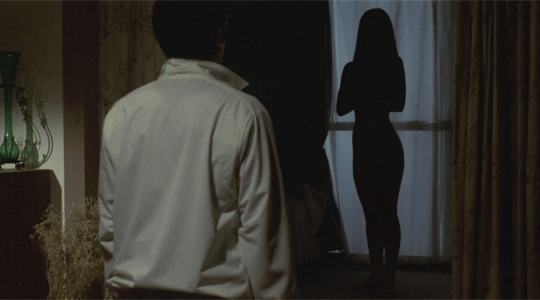


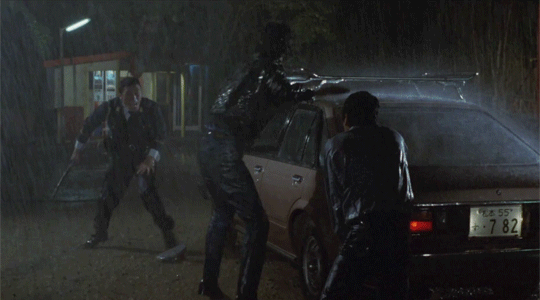
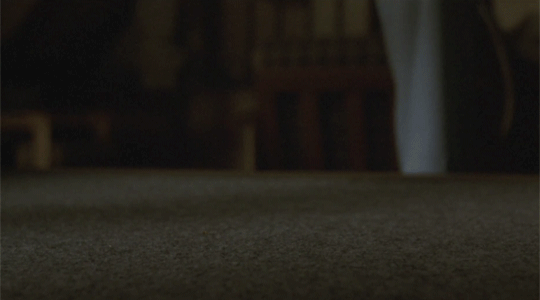
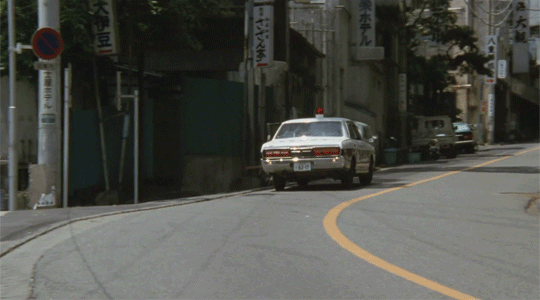
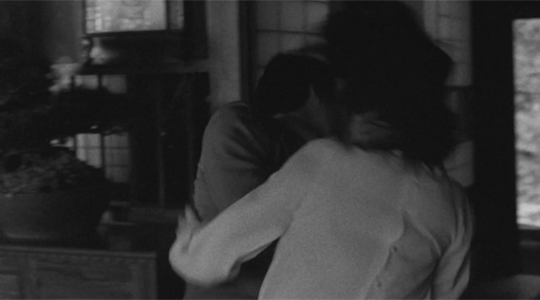
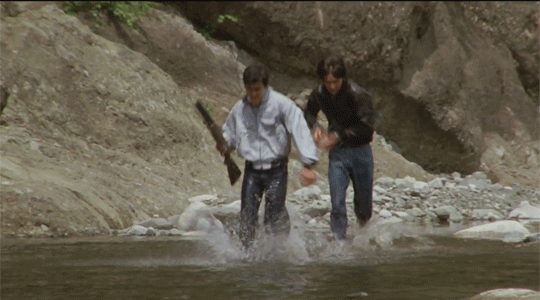
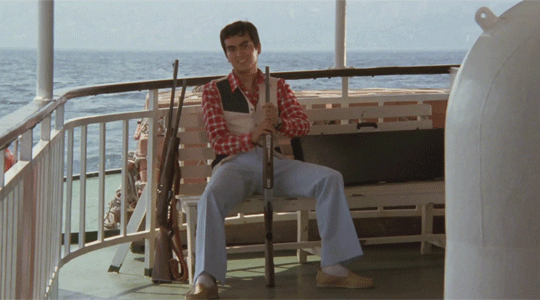
The Shootout
凶弾 (1982)
#The Shootout#凶弾#Yoshizumi Ishihara#Mio Takaki#Masato Furuoya#Tatsuo Yamada#Kumiko Akiyoshi#石原良純#高樹澪#古尾谷雅人#山田辰夫#秋吉久美子#Toru Murakawa#村川透#Japan#movie#gif#1982
10 notes
·
View notes
Text











#D-DILFS…#same face syndrome who!???!??? NOT WHEN I MAKE OLD MALE CHARACTERS🗣️‼️🗣️‼️#holy shit.#I dont think I will stop drooling over them fr. HOLY SHI-#yall Imagine if all of them in the same universe. they going to break the internet I fear.#guess whos my favorite (impossible)#dante queen#jet timberwolf#gunnar lenhart#taiga yamada#tatsuo majima#keith sewell#solewin the boss#ts4#sims 4#simblr#ts4 my sims#my sims#Spotify
358 notes
·
View notes
Text
Chinyuki: Taro and his amusing companions (2009) 珍遊記 ~太郎とゆかいな仲間たち~
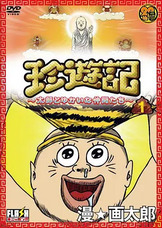
Director: Kasugamori Haruki Screenwriter: Haruki Kasugamori Starring: Tesshō Genda / Tomoko Kumai / Yoko Matsuoka / Rikimaru Touhou / Yorimitsu Sakamoto / Chie Kamiyo / Kujira / Tomohiro Nishimura / Kiriko Aoyama / Miki Fujitani / Minoru Torihada / Takamasa Nakao / Takahiro Sakurai / Kurumi Mamiya / Kana Asumi / Shoto Kashii / Kozo Dosaka / Hidenari Ugaki / Takaya Kuroda / Thank You Tatsuo / Sakuya Kunii / Shiori Yokoi / Momo Ito / Mai Hirose Genre: Animation Country/Region of Production: Japan Language: Japanese Date: 2009-06-12 (Japan) Number of episodes: 4 Also known as: Chinyuuki: Tarou to Yukai na Nakama-tach Type: Reimanging
Summary:
The original work is a gag manga serialized in Shueisha's ``Weekly Shonen Jump'' from 1990 to 1992. The third original video animation produced as part of the 20th anniversary project of author Man☆Gataro's debut as a manga artist, ``It's 20 years since I fell asleep! It's Man☆Gataro Festival, Bakayaro!!''.
The time is Mansei 2nd year. Genjo, a monk who was continuing his journey towards Tenjiku, is asked by chance to rehabilitate his delinquent son. However, that son is a monster who is causing trouble in the capital! Although Genjo has a hard time against Yamada Taro, a monster with strong magical powers, he succeeds in absorbing Taro's magical energy with his jewel and making him accompany Taro on his journey to Tenjiku, where he has become a monkey. During their journey, the two arrive at a certain town, but Taro, who was walking naked, is picked up by the town's evil gang, the Takeshi Corps. Taro steals Genjo's attention and tries to get revenge on the evil brat, but...?
Source: https://myanimelist.net/anime/6687/Chinyuuki__Tarou_to_Yukai_na_Nakama-tachi
Link: N/A
#Chinyuki: Taro and his amusing companions#珍遊記 ~太郎とゆかいな仲間たち~#jttw media#Chinyuuki: Tarou to Yukai na Nakama-tach#jttw televison#television#animation#lost media#reimaging#reimagining#alternative universe#sun wukong#tang sanzang
7 notes
·
View notes
Text
Raíces y Origen: Cómo Nació el Kickboxing El kickboxing es un deporte de combate que ha capturado la atención de entusiastas en todo el mundo, pero para entender completamente su popularidad actual, es fundamental explorar sus orígenes. Las raíces del kickboxing se entrelazan con la historia de diversas artes marciales, principalmente el Muay Thai tailandés, el karate japonés y el boxeo occidental. Esta disciplina emergió como un esfuerzo por combinar lo mejor de cada arte y crear un estilo de lucha que fuera tanto efectivo como espectacular. En la década de 1950 y 1960, los promotores de lucha en Japón comenzaron a organizar competencias que permitían enfrentamientos entre practicantes de diferentes estilos marciales. Estos eventos fueron la plataforma que dio a luz al kickboxing cuando el karateka Tatsuo Yamada vislumbró la posibilidad de que practicantes de karate compitieran bajo reglas que permitiesen el uso de patadas y puños, inspirándose también en las técnicas de puñetazos del boxeo occidental. En los primeros días, las normas del kickboxing estaban aún en formación, con regulaciones variadas dependiendo de la organización o región. No obstante, el objetivo principal era unificar el arte de las patadas del karate con las habilidades de boxeo, y es esta sinergia la que eventualmente consolidó al kickboxing como un deporte con identidad propia. Con el tiempo, surgieron reglamentos estandarizados que enmarcaron el ring, los guantes y las técnicas permitidas, lo que ayudó a formalizar el deporte a nivel internacional. La influencia del Muay Thai se hizo evidente a medida que incorporaron técnicas de esta disciplina tailandesa, conocida por su poderoso uso de rodillas y codos, elementos que agregaron una capa de complejidad técnica y estratégica al kickboxing. No obstante, el kickboxing moderno suele limitar el uso de estos recursos, marcando una diferenciación clara con el Muay Thai pero sin dejar de reconocer su aporte en la formación del deporte. El kickboxing tuvo su auge de popularidad durante los años 70 y 80, coincidiendo con un creciente interés mundial en las artes marciales, impulsado también por figuras icónicas del cine como Bruce Lee. Esta época vio el florecer de competencias y campeonatos internacionales, solidificando aún más su estatus como un deporte competitivo y creando héroes en el ring cuyas leyendas perduran hasta nuestros días. Con una historia tan rica y multifacética, el kickboxing sigue evolucionando, pero siempre manteniendo el espíritu y las técnicas que le dieron origen. A pesar de las variaciones modernas y las adaptaciones a distintos contextos culturales y deportivos, el reconocimiento de su herencia es vital para entender la disciplina tal como se practica hoy en día. Deporte en Desarrollo: La Evolución Histórica del Kickboxing El kickboxing, conocido por sus técnicas dinámicas y su exigente naturaleza física, ha experimentado notables cambios a lo largo de su historia. Desde sus orígenes esenciales en el Lejano Oriente, atravesó un ecléctico proceso de evolución, influenciado significativamente por diversas artes marciales y disciplinas de combate. Este trayecto ha tejido una rica cronología que resalta su crecimiento gradual y su estatus actual como deporte de combate global. Orígenes y Primeras Influencias El kickboxing se nutre de raíces profundas en prácticas ancestrales como el karate y el Muay Thai. Estas artes centenarias marcaron los cimientos del deporte, forjando una base sólida de patadas y golpes. Durante los años 50 y 60, en la era posguerra, Japón y otros países asiáticos experimentaron con fusiones de técnicas, lo que catalizó el desarrollo formal del kickboxing como disciplina independiente y reconocible. Expansión Internacional y la Influencia Occidental La internacionalización del kickboxing fue un acontecimiento clave que impulsó su evolución. A medida que el deporte se diseminaba en Occidente, la incorporación de enfoques de entrenamiento occidentales, tales como
el boxeo y el sparring competitivo, comenzó a moldear una práctica más estructurada, dando paso a la estandarización de reglas y torneos oficiales. Con la llegada del kickboxing a Estados Unidos en el siglo XX, se generó un intercambio cultural que trascendió el mero aspecto deportivo, integrando aspectos de espectáculo y promoción que transformaron los encuentros en eventos con masiva audiencia y relevancia mediática. Diversificación y Modernización del Kickboxing En las últimas décadas, hemos sido testigos de la diversificación del kickboxing, con variantes como el K-1 y el shoot boxing, que potenciaron su atractivo y accesibilidad. Estas variantes han enriquecido el deporte, ofreciendo diferenciaciones en el reglamento y en la técnica, lo que ha incentivado la participación de un mayor espectro de atletas y entusiastas. La era digital y las nuevas plataformas tecnológicas han jugado un papel importante en la promoción y seguimiento del kickboxing. Las transmisiones en línea y las redes sociales han facilitado una mayor visibilidad y han generado un crecimiento sostenido en la base de aficionados. La modernización no solo ha influenciado la forma en que los seguidores interactúan con el deporte, sino también cómo los atletas incorporan innovaciones en entrenamiento y estrategia. Íconos del Ring: Figuras Históricas del Kickboxing El mundo del kickboxing ha sido marcado por múltiples luchadores que han trascendido los límites de este deporte convirtiéndose en verdaderos íconos. Entre la amalgama de puños y patadas que caracterizan al kickboxing, algunas figuras han destacado gracias a sus hazañas, técnicas y contribuciones al deporte. Ellos no solo han dejado una huella indeleble en la memoria de los aficionados, sino que también han inspirado a generaciones de atletas a seguir sus pasos. El Ascenso de Leyendas: Durante la época dorada del kickboxing, púgiles como Benny "The Jet" Urquidez y Don "The Dragon" Wilson irrumpieron en la escena, obteniendo títulos y reconocimientos en un deporte que comenzaba a ganar popularidad a nivel internacional. Estos pioneros del ring lograron elevar el estándar del kickboxing profesional, atrayendo a un público cada vez mayor. La excelencia y el carisma de estos combatientes pavimentaron el camino para hacer del kickboxing un espectáculo respetado y emocionante. Hablando de Técnica y Estilo: En el kickboxing, como en muchas disciplinas de combate, la técnica es tan valiosa como la fuerza. Atletas como Semmy Schilt, con su impresionante altura y alcance, demostraron que una mezcla de habilidad y estrategia puede resultar en victorias resonantes y dominio en la categoría de pesos pesados. Las tácticas metodológicas y los entrenamientos innovadores de estos competidores han ido moldeando la técnica del kickboxing, elevando el deporte a nuevos niveles de competencia y espectáculo. Inspiración Más Allá del Ring: Más allá de sus logros dentro del cuadrilátero, muchos íconos del kickboxing han tenido influencia fuera de él. Por ejemplo, Ramon Dekkers se convirtió en una figura de culto no solo por sus victorias sino también por su espíritu indomable y su capacidad para enfrentarse a oponentes en distintos rincones del mundo, llevando la esencia del kickboxing más allá de las fronteras. La pasión y determinación de deportistas como Dekkers han inspirado innumerables jóvenes a perseguir sus sueños dentro de las artes marciales, y han demostrado el poder del deporte como una herramienta transformativa en la vida de las personas. La Era de Oro y su Legado: A medida que el mundo del kickboxing continuaba evolucionando, figuras como Ernesto Hoost y Peter Aerts dominaron las carteleras con sus estilos únicos y enfrentamientos memorables. Estos íconos no solo competían por los títulos, sino que también se enfrentaban al reto de mantener el kickboxing relevante en la esfera deportiva global. Su habilidad para cautivar al público con cada combate y su compromiso con el crecimiento del deporte son reflejados en la vibrante comunidad internacional de kickboxing de hoy día.
Kickboxing en la Cultura Popular: Su Expansión Global El kickboxing ha trascendido los límites del deporte para implantarse firmemente en la cultura popular de todo el mundo. Lo que comenzó como una disciplina marcial se ha transformado en un fenómeno global gracias, en parte, a su impactante presencia en las películas, la televisión, y la música. Este arte marcial combina técnicas de boxeo con patadas de otras disciplinas como el karate y el muay thai, lo que ha atraído una audiencia diversa y entusiasta. En Hollywood, la influencia del kickboxing ha sido notoria en series de acción y suspenso, dando lugar a icónicos personajes que utilizan estas técnicas de lucha. Estas representaciones han ayudado a desmitificar el deporte y a mostrarlo como una actividad accesible para todos, promoviendo así su práctica a nivel amateur y profesional. El cine asiático, en particular, ha ofrecido un gran número de filmes donde el kickboxing no solo es parte de la trama, sino el centro de la misma, elevando a los artistas marciales a la categoría de héroes culturales. La integración del kickboxing en la industria del entretenimiento se ha complementado con su aparición en programas de televisión, donde concursos y reality shows han capturado la atención del público. Programas centrados en la vida de los kickboxers y las competiciones profesionales han aumentado el interés por el deporte y han impulsado a muchos a practicarlo. Esta visibilidad televisiva ha sido crucial para la difusión de técnicas y la apreciación de los valores intrínsecos en esta disciplina, como el respeto, la disciplina y la tenacidad. La música no ha quedado ajena a esta expansión cultural. Canciones con temáticas de superación personal, lucha y resistencia a menudo incorporan metáforas relacionadas con el kickboxing, resaltando su relevancia más allá de los gimnasios y dojos. Artistas musicales han utilizado el kickboxing en videoclips y presentaciones en vivo, lo que refleja su penetración en diferentes expresiones de la cultura pop contemporánea. Además, el merchandising relacionado con el kickboxing ha disfrutado de un auge considerable. La venta de indumentaria, equipo y videojuegos temáticos no solo ha generado mayores ingresos para la industria, sino que también ha ayudado a difundir la imagen estilizada y moderna del kickboxing como estilo de vida. Entender la Lucha: Estilos y Reglamentos del Kickboxing El kickboxing, como deporte de combate, se ha diversificado en distintos estilos y reglamentos que marcan la pauta de la competencia. Esta riqueza de variantes ofrece a los entusiastas del kickboxing una amplia gama de técnicas y tácticas que pueden aprender y desarrollar. A continuación, exploraremos algunos de los aspectos más relevantes que definen los estilos y reglamentos del kickboxing moderno. Orígenes y Fusiones de Estilos El kickboxing tiene sus raíces en artes marciales como el karate, muay thai, y el boxeo occidental. Con esta herencia, distintos estilos han tomado forma, incorporando la rígida disciplina del karate, la potencia de los golpes del muay thai, y la destreza de movimiento y defensa del boxeo. La fusión de estos elementos hace que el kickboxing sea no solo un arte marcial, sino también un deporte completo que prueba la habilidad física y mental de los luchadores. Variaciones de Reglamento por Organización La manera en que se pelea un combate de kickboxing puede variar considerablemente dependiendo de la organización que regule la pelea. Organizaciones como la ISKA, WAKO, y Glory tienen sus propios conjuntos de reglas que afectan aspectos como la duración de los asaltos, la puntación, y las técnicas permitidas. Por ejemplo, algunas organizaciones prohíben el uso de codos y rodillazos, mientras que otras los permiten, añadiendo una capa adicional de estrategia y habilidad. El Papel de la Puntación y las Técnicas Permitidas La forma en que se puntúa una pelea de kickboxing es clave para entender los estilos y reglamentos. Los golpes limpios
y contundentes, la agresión controlada, y la defensa efectiva son generalmente las áreas que se evalúan para determinar a un vencedor en el caso de no haber un nocaut. Además, las técnicas permitidas varían, con algunos estilos enfocados en golpes de puño y patadas por encima de la cintura exclusivamente, mientras que otros estilos incorporan una gama más amplia de técnicas, incluyendo las ya mencionadas patadas bajas y el uso de codos y rodillas. Equipo y Protección en Diferentes Reglamentos El equipo utilizado en el kickboxing también refleja la diversidad de sus reglamentos. Por ejemplo, algunos estilos requieren el uso de cascos protectores y protectores de pecho, mientras que otros solo exigen guantes de kickboxing y espinilleras. Esta diferencia en el equipo puede influir en la movilidad y estrategia del luchador, así como en la seguridad de los competidores. Preparación de un Kickboxer: Entrenamiento y Disciplina La preparación de un kickboxer se cimenta sobre dos pilares fundamentales: un régimen de entrenamiento riguroso y un compromiso inquebrantable con la disciplina. Estos atletas dedican incontables horas a afinar su técnica, fuerza y resistencia, elementos cruciales para destacar dentro del ring. El camino para convertirse en un competidor de élite en kickboxing exige perseverancia y un enfoque meticuloso hacia cada aspecto de su preparación. Entrenamiento Físico y Técnicas de Combate La condición física excepcional es un requisito para todo kickboxer serio. Esto abarca un programa de entrenamiento diverso que incluye desde ejercicios cardiovasculares, como saltar la cuerda y correr, hasta sesiones de peso corporal y levantamiento de pesas para mejorar la fuerza muscular. Además, los entrenamientos técnicos, tales como clases de sombra, trabajo con sacos de boxeo y sparring, son esenciales para perfeccionar las habilidades de lucha y la estrategia en el ring. Dietas y Nutrición La nutrición desempeña un papel crucial en la preparación de un kickboxer. Una dieta equilibrada que incluya una variedad de proteínas magras, carbohidratos complejos y grasas saludables es indispensable para mantener la energía y facilitar la recuperación muscular. La hidratación adecuada es igualmente importante, ya que estos deportistas pierden una cantidad significativa de líquidos durante sus intensas sesiones de entrenamiento y combates. Disciplina Mental y Enfoque Además de la preparación física, la fuerza mental y la disciplina son aspectos que no se pueden subestimar en el entrenamiento de un kickboxer. La capacidad para mantener la concentración y el enfoque bajo presión es lo que a menudo diferencia a los campeones de los demás competidores. Técnicas como la meditación y la visualización se utilizan para mejorar la firmeza mental, gestionar el estrés previo a las peleas y para establecer un estado de ánimo combativo y positivo. Recuperación y Descanso Por último, pero no menos importante, la recuperación y el descanso adecuados son vitales para el rendimiento óptimo de un kickboxer. Dormir bien es esencial para la reparación muscular y la claridad mental. Los días de descanso y las técnicas de recuperación como el foam rolling, masajes deportivos y baños de contraste, ayudan a prevenir lesiones y permiten al cuerpo regenerarse después de los rigores del entrenamiento y la competencia. El Kickboxing Hoy: Tendencias Actuales y Panorama Futuro El kickboxing, una disciplina que fusiona técnicas de boxeo con patadas de artes marciales, está experimentando un resurgimiento en popularidad. Las tendencias actuales muestran un creciente interés en las artes marciales mixtas (MMA), donde el kickboxing es un componente clave. Este interés ha llevado a una mayor visibilidad en plataformas de streaming y redes sociales, donde atletas y aficionados comparten sus entrenamientos, combates y técnicas. Este fenómeno digital ha conectado a seguidores de todo el mundo, incentivando la práctica y el seguimiento del deporte. En la actualidad, los gimnasios
especializados en kickboxing están implementando nuevas metodologías de entrenamiento que incluyen tecnología de punta. Apps de seguimiento de progreso, wearables que registran estadísticas físicas, y realidad virtual (VR) que simula combates, son ejemplos de cómo la innovación tecnológica está moldeando la forma en que los luchadores se preparan para la competencia. Estas herramientas no solo ayudan en el mejoramiento constante de los atletas sino que también hacen el deporte más accesible para principiantes. Desde el punto de vista competitivo, las promociones y organizaciones de kickboxing están ampliando su alcance global, organizando eventos internacionales que destacan la diversidad y el talento mundial. Los torneos trasnacionales fomentan un espíritu de camaradería y competencia sana, al mismo tiempo que elevan el estándar de los combates y estrategias utilizadas dentro del ring. El panorama futuro es igualmente prometedor. Se espera que el kickboxing siga ganando terreno como deporte y aeródromo —un régimen de ejercicio preferido por quienes buscan mejorar su forma física y destrezas de autodefensa. Las discusiones sobre la inclusión del kickboxing en eventos multideportivos de gran envergadura, como los Juegos Olímpicos, ya están en marcha. Este reconocimiento no solo legitimaría aún más al kickboxing como disciplina deportiva sino que también podría resultar en un aumento significativo en la base de aficionados y practicantes. [aib_post_related url='/historia-del-boxeo-moderno/' title='Descubre la Evolución Pugilística: Historia del Boxeo Moderno Explicada' relatedtext='Quizás también te interese:'] Asimismo, la esfera médica y científica está prestando mayor atención al kickboxing. Los beneficios para la salud y los riesgos asociados con la práctica son temas de interés en estudios actuales, lo que podría conducir a reglamentaciones mejoradas y protocolos de seguridad más estrictos, garantizando así el bienestar de los atletas. Evolución de las Estrategias y Técnicas de Combate [aib_post_related url='/historia-y-origenes-del-kung-fu/' title='Historia y orígenes del Kung Fu' relatedtext='Quizás también te interese:'] Play on YouTube El estudio y evolución de las técnicas de combate dentro del kickboxing es una constante. Instructores y combatientes están continuamente buscando formas de innovar en sus estrategias, encontrando maneras de integrar movimientos de otras artes marciales que complementen su repertorio. Esta evolución de las técnicas no solo hace que los combates sean más emocionantes y menos predecibles, sino que también desafía la creatividad y adaptabilidad de los luchadores.
0 notes
Text
Crazy Thunder Road (1980)





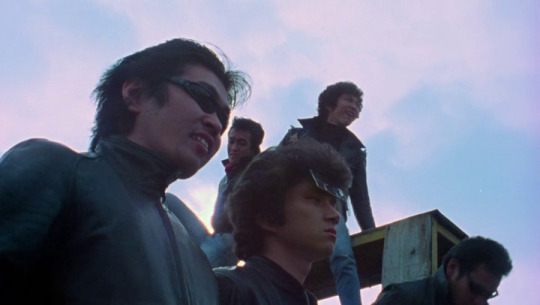




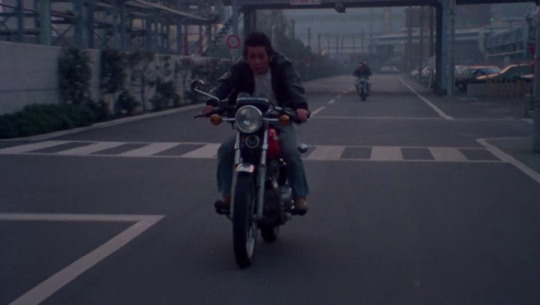

狂い咲きサンダーロード Crazy Thunder Road (1980) directed by Gakuryu Ishii cinematography by Norimichi Kasamatsu
#狂い咲きサンダーロード#crazy thunder road#gakuryu ishii#japanese cinema#japanese film#stills#post-apocalyptic#koji nanjo#tatsuo yamada
18 notes
·
View notes
Text

Hello there, my name is Jakurai Jinguji and this is a blog run by me and my friends in order to introduce to our children and ask them questions, I will be moderating this blog along with my husband and our friends
papa, is it time yet?
Oh! Yes, please if you don't mind, meet the children you'll be asking questions.

Nice to make your aqaitenc, my name is Ame Jinguji, I'm twelve years old, I am the daughter of Jakurai Jinguji and Ramuda Amemura, I hope we can get along!

Why did the chicken cross the road you ask? Well...it didn't! Chickens don't cross roads! Hiya! I'm Nozomi Nurude! Daughter of comedian extraordinaire Sasara Nurude and #1 teacher Rosho Tsutsujimori!, I'm twelve years old and I hope you love to laugh!

Oh uh...hi I'm Naozumi Nurude...you met my twin sister um...you saw who she said my parents were...um...yeah, I'm also twelve but you probably knew that...n-nice to meet ya...

I-I-I'm Ishi... Is-shi K-Kannonzaka....I'm the son of...D-Doppo Kannonzaka and...H-Hifumi Izanami...I'm eleven...p-please just be nice...

Ya-ho! I'm Sora! Sora Yumeno! My one dad is an author and my other dad stays home all day...except that's a lie! He just works in the shopping district! Their names are Gentaro Yumeno and Dice Arisugawa! Real cool to meet ya! I'm eleven by the way!

Hey there! I'm Tatsuo Yamada! I'm the son of Kuko Harai and Ichiro Yamada! Plus I got a lot of uncles which is weird...anyway! I'm a Buddhist! I'll teach you anything you could ever want to know about it! Even though I'm only eight.

Goodness you're all so full of energy, anyway, the kids will be taking asks, you may ask them individually or all together but of course there are some rules for asks.
1. Please nothing inappropriate
2. Be kind to the children please
3. Don't try to ask the parents questions unless we specify that we are taking questions
Well, that should be it, I hope you'll send any of the kids an ask or two, now if you'll excuse me, I must go take everyone to their parents.
(Hi there, actual runner of this blog, all the pictures of the kids were made with this, please use it, another thing, new characters will be coming soon and will be added as soon as they are developed, finally, if you don't like the ships these kids are born from then look the other way please, any disrespect of this rule will earn you an immediate block, thank you and good evening)
#hypnosis mic#hypmic#hypmic ship kids#hypmic oc#ame Jinguji#tatsuo Yamada#Nozomi Nurude#ishi Kannonzaka#sora yumeno#jakurai jinguji
19 notes
·
View notes
Photo










Departures (2008) Director - Yôjirô Takita, Cinematography - Takeshi Hamada “Working here all these years, I’ve often thought that maybe death is like a gateway, dying doesn’t mean the end. You go through it and onto the next thing. It’s a gate, and as a gatekeeper, I’ve sent many on their way, so go on then, until we meet again…” Sometimes, the universe has a very strange way of giving us second chances and we end up finding ourselves and finding purpose in the strangest places.
#scenesandscreens#departures#okuribito#Masahiro Motoki#Tsutomu Yamazaki#Ryôko Hirosue#Kazuko Yoshiyuki#Kimiko Yo#Takashi Sasano#Tetta Sugimoto#Tôru Minegishi#Tatsuo Yamada#Yukari Tachibana#Tarô Ishida#Sanae Miyata#Ryôsuke Ôtani#Mitsuyo Hoshino#Tatsuhito Okuda
121 notes
·
View notes
Link

#anime#animation#precure#futari wa precure#futari wa precure splash star#yes! precure 5#fresh precure#go! princess precure#go!プリンセスプリキュア#heartcatch precure#happiness charge precure#kira kira precure a la mode#tatsuo yamada#hironori tanaka#naotoshi shida#shingo fujii#nishiki itaoka#sakuga
2 notes
·
View notes
Video
youtube
Bastard!!: Heavy Metal, Dark Fantasy (2022) anime - Main PV (with English captions)
Bastard!!: Heavy Metal, Dark Fantasy (2022) anime will stream worldwide on Netflix on June 30, 2022 with the 1st cour (episodes 1-13). The 2nd cour (episodes 14-24) will stream at a later date.

Key visual
Cast additions


Yoshitsugu Matsuoka as Lars

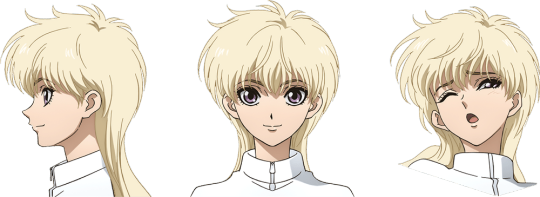
Ari Ozawa as Sean Ari


Shizuka Itou as Kai Harn

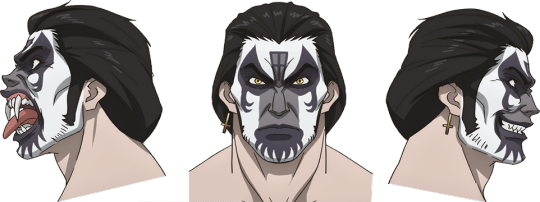
Takehito Koyasu as Di-amon

Mami Koyama as Anthrasax
Previously announced cast members
Kishō Taniyama as Dark Schneider
Tomori Kusunoki as Tia Noto Yoko
Hiroki Yasumoto as Gara
Yōko Hikasa as Arshes Nei
Kanae Itō as Lucien Renlen
Tomokazu Sugita as Abigail
Kensho Ono as Kall-Su
Nao Tōyama as Sheila Tuel Meta-Ilicana
Staff
Director: Takaharu Ozaki
Series composition: Yousuke Kuroda
Character design: Sayaka Ono
Sound director: Yasunori Ebi
Music: Yasuharu Takanashi
Creature Design: Raita Sunaga
Effects Design: Tatsuo Yamada
Art Director: Kazuhiro Inoue (Kusanagi)
Art Setting: Barnstorm Design Labo
Color Key Artist: Aiko Shinohara
Special Effects Supervisor: Kumiko Taniguchi
Special Effects: Ayumi Arahata (Team Taniguchi)
3D CGI: Felix Film
Compositing Director of Photography: Junpei Takatsu
Editing: Mai Hasegawa (EditZ)
Animation production: LIDEN FILMS
#Bastard!!#Bastard#Bastard Heavy Metal Dark Fantasy#Bastard Ankoku no Hakaishin#Bastard anime#LIDEN FILMS#Netflix#anime#TV anime#semi late post#long post
57 notes
·
View notes
Text
this cut from Tatsuo Yamada is one of my favorite ever
2 notes
·
View notes
Text










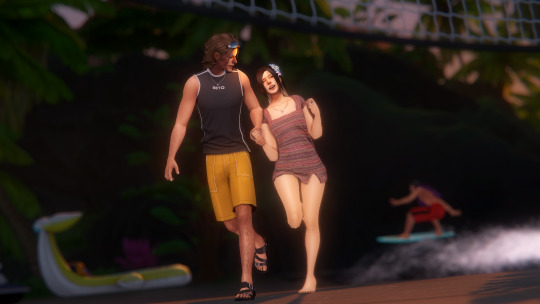
#majima land#still summertime in tomarang we lovin it#roo medici#norman niles#taiga yamada#tatsuo majima#mingyue majima#naomi butler#ts4 screenshots#sims 4 screenshots#ts4#sims 4#simblr#my sims#Spotify
206 notes
·
View notes
Text
Hypmic Future AU-part 3 (Gendice)
Part 3! real quick, I did rename the AU and will be changing the other chapters titles accordingly. You know the drill, here and here are the visual for the kids and part 1 and part 2
"Papa! Get up get up!" A voice said, giggling happily.
Dice groaned, "Sora...it's early...what is so important?" The ex-gambler asked his daughter, pulling the blankets over his face.
"We're gonna get a kitty today! Dad and you said today was the day! So you gotta get up!"
"Oh! Well why didn't you just say so?" Dice said as he shot up in bed, he picked up his daughter, ruffling her hair and kissing her head, "let's go then my little angel!"
Dice left the bedroom while carrying Sora, and walked to the kitchen to see his husband, Gentaro, cooking breakfast and humming to himself.
"Good morning to you my darling, what's for breakfast?" Dice asked Gentaro, kissing his cheek softly.
Gentaro looked at him and smiled, "Well Sora and I are having pancakes with eggs and fruit, you'll be eating dog food".
"Eh?!"
"That was a lie".
"Ah...you're still doing that…" Dice sighed.
"We've been married for so long I'm still surprised you can't catch me when I lie, you even believed me when I said you shrunk when I just grew a few inches" Gentaro teased, twirling Dice's hair around his finger.
Dice blushed slightly, "You really are-"
"I'm hungry!" Sora shouted suddenly.
Gentaro laughed, "Be patient now, I'm almost done, you and papa go set the table for me, okay?"
"Okay…"
~~
"Are we all ready to go?" Gentaro asked.
"Yes!" Both Sora and Dice responded.
"We have everything? Money to buy stuff, phones, bags?"
"Yes!"
Gentaro smiled, "Alright then, let's head to the shelter".
The family left their apartment and walked down the streets of Shibuya, passing many different shops and people, and even passing by a few casinos.
"You're showing amazing restraint, Dice, you used to be all over those places"
Dice squeezed his hand, "You say that every time, I'm doing way better for myself, you know that, I promised you I'd never smoke or gamble again and have I?"
"No, you've done amazing".
Gentaro felt Sora tug on his sleeve, he looked down to her, "Yes sweetheart?"
"Dad what's gambling?"
Dice and Gentaro looked at each other and began laughing nervously.
"W-we'll tell you when you're older...ok?" Dice said.
"Fine…"
Gentaro smiled awkwardly,"Oh look at that we're at the shelter! Come on let's go!"
~~
The three of them followed a worker to a room where the cats were kept, they walked in as the same worker told them to take as much time as they need and to come notify him when they wanted to choose a cat.
"Dice, Sora, you two go ahead and pick one out, I'll stay back and wait for you" Gentaro said, petting Sora's head.
Sora giggled and grabbed Dice's hand "Ok! Come on papa!"
"Right behind you sweetie!"
Gentaro laughed quietly to himself as he watched them look at cats, seeing the two people he loved most so excited.
"Dad!" Sora called, "We found her! We found the cat!"
"You gotta see her! She's cute!" Dice called as well.
Gentaro walked over to them and looked at the cat they were sitting excited about, she was a small calico cat with a bobtail, she mewed and ran about her cage with joy.
"That's the one you want? Alright I'll go get the worker".
~~
"Thank you! Please take care of your new friend!" The clerk said, smiling and waving goodbye.
Dice looked at Sora who was staring at the cat in the carrier Gentaro was holding, smiling widely.
Gentaro cleared his throat, "Well then, we better head to the pet store to get some supplies, good thing it's right there."
They all walked in and began looking through everything they might need, food, food dishes, toys, litter boxes, litter, collars and anything else.
"Ah! What a coincidence!"
Dice and Gentaro looked back to see Ichiro Yamada and Kuko Harai along with a little boy, about seven years old.
"Oh hey! Yamada Ichiro!" Dice said, laughing, "Man, haven't seen you in forever, how you been?"
Ichiro laughed back and held out his hand which dice shook, "Pretty good as you can see, married to the man of my dreams with a son who's just like us, life couldn't really be better!"
Gentaro smiled and bowed as greetings, "We heard from Ramuda that you're now living as a Buddhist, right? We never expected that but it's certainly fun to hear".
"Yep, Kuko wanted me to at least see what it's like and I ended up becoming Buddhist myself, Tatsuo is too" he said, petting the young boy's hair.
"Of course you both are!" Kuko laughed
"What brings you to the pet store then?"
"Just grabbing some stuff for our dog, we have a pomeranian at home, what about you guys?"
"We just adopted a cat today, we're picking out stuff".
Ichiro smiled, "That's cool of you guys, how about we exchange numbers? To keep in touch"
"Yeah! No problem, let's do it!" Dice laughed.
~~
Dice and Gentaro smiled as they both watched Sora play with their new cat, Dice had his phone out filming and taking pictures of the moment while laughing.
Gentaro then spoke up, "You know Sora, she still needs a name, you wanna do it?"
Sora nodded vigorously and picked up the cat, holding her close and listing different names to herself until she stopped suddenly.
"Got a name in mind kiddo?" Dice asked.
"Rin-Rin!" Sora said.
Gentaro walked over and picked up Sora, "Well then, Rin-Rin it is" he told her before kissing her head.
"Yep, nice name for a cat, good job Sora".
Gentaro smiled and then looked at the clock, "We better head to bed soon, it's getting late, let's all sleep together in my bed tonight".
"Alright! Sounds nice!" Dice said.
"Not you, you'll sleep on the floor."
"Eh?!"
Gentaro kissed Dice's cheek, "That was another lie, my darling idiot".
12 notes
·
View notes
Note
awww y'all looks so adorable!!! I wanna ask all of the kids! do you guys go on a family trip with your dads? if so, what is your most memorial day together? :3

We go on trips all the time! I loved it when we went to Harajuku, there were so many pretty things to look at!

My favorite was when we went to the stage where dad performs all the time! Besides that we don't take a lot of trips but we still take them

Um...one time we went to the Osaka history museum, it was nice...I got a book there...

U-uhhh...I-I guess when w-we went cherry blossom vi-viewing, it was p-pretty

I loved it when we went to the beach! It was so fun! We played a ton and made a really cool sandcastle!

My favorite was when we went to Ikebukuro where daddy is from! We visited uncle Jiro and uncle Saburo and grandpa Rei! We saw lots of sights too!
Thanks for the ask!
#hypmic oc#hypmic ship kids#hypnosis mic#ame jinguji#sora yumeno#tatsuo yamada#Nozomi Nurude#naozumi Nurude#ishi kannonzaka
11 notes
·
View notes
Photo

Isuzu Yamada in Tokyo Twilight (Yasujiro Ozu, 1957) Cast: Setsuko Hara, Ineko Arima, Chishu Ryu, Isuzu Yamada, Haruko Sugimura, Nobuo Nakamura, Kamatari Fujiwara, Kinzo Shin, Masami Taura. Screenplay: Kogo Noda, Yasujiro Ozu. Cinematography: Yuharu Atsuta, Art direction: Tatsuo Hamada. Music: Takanobu Saito. Some critics see Mikio Naruse's Sound of the Mountain (1954) as a kind of reaction against films by Yasujiro Ozu like Late Spring (1949) in which the plot climaxes with the marriage of a young woman. Naruse explored the fact that marriage is not always, or even seldom, the fulfillment of things that the bride and her family have wished for. But Ozu himself is not beyond skepticism about marriage, and no film of his depicts that skepticism more keenly and tragically than Tokyo Twilight, in which a father whose own marriage has failed is trying to cope with the failed marriage of one daughter and the troubled love life of another. The father in this case is played, as it so often was in Ozu's films, by Chishu Ryu, Ozu's favorite actor. I can see why Ozu liked him so much: Is there any other actor who can say "Hmm" with such eloquence and variety of intonation than Ryu? He has many opportunities to pack that internalized sound with meaning in Tokyo Twilight, expressing everything from doubt to contentment to disapproval, or just reinforcing his character's stoic resignation to the misfortunes that life continues to bring him. Ryu’s Shukichi Sugiyama and his three children were abandoned by his wife during the war, when he was stationed in Seoul, and he has done what he can to raise the family. The son from the marriage has died in an accident several years earlier, and now his daughter, Takako (Setsuko Hara), has left her husband, bringing their toddler daughter to live with Shukichi. The other daughter, Akiko (Ineko Arima), has a disastrous fling with the irresponsible Kenji (Masami Taura), who leaves her pregnant and looking for the money to have an abortion. The various secrets that the family, packed into one of the boxlike homes Ozu has made into such eloquent settings (expressing both closeness and confinement), only become more pressing when the girls' mother, Kikuko (Isuzu Yamada), returns to their lives: She and her new husband (Nobuo Nakamura) -- the man she left Shukichi for has died -- run a mah jongg parlor that Akiko, searching for Kenji, finds herself in. Kikuko overhears the young woman's name and, realizing Akiko is her daughter, strikes up a conversation, asking about the family without revealing the truth. But then Shukichi's sister accidentally encounters Kikuko while shopping and brings him the news that she's returned. When Takako overhears, she goes to Kikuko and asks her not to reveal her identity to Akiko. But secrets will out, and Akiko, racked with guilt not only for the abortion but also for having been arrested under suspicion of prostitution while waiting for Kenji in a bar, decides that she has inherited a bad streak from Kikuko, even questioning whether Shukichi is her actual father. Events are set in motion that culminate in Takako denouncing Kikuko, who decides to leave town. There is a poignant scene at the end in which Kikuko, hoping that she has made amends with Takako, looks out of the window of the train for her daughter to say goodbye. If you know Isuzu Yamada only as the sinister "Lady Macbeth" of Akira Kurosawa's Throne of Blood (1957), her performance as the woman who has spent a lifetime of quiet regret will be eye-opening. As usual, Ozu transcends the potential for sentimental excess and the complexities of plot to arrive at just the right blend of pathos and quiet endurance.
1 note
·
View note
Text
The case of a mysterious death at a CARP training session in Japan. The 18 year-old student had been beaten.

日本の狂気―勝共連合と原理運動 (1971年) Link to the Japanese
Frenzy in Japan – The Federation [for Victory over Communism] and the Unification Church (1971) by Arai Arao 荒井 荒雄
This is an edited automatic translation.
Pages 148-155
“… The other day, I was walking around the area in front of Hachiko pulling a trolley. Then the cloudy sky suddenly cleared and I realised I was walking in the mountains. I was taking a walk in the spirit world. …”
“After this last part of the walk, the rituals were amazing. More than sixty people were shouting and sobbing in unison. It was a kind of mental delirium, mass hysteria….” “On the night of the 10th, I finally escaped from CARP (the Collegiate Association for the Research of Principles) to this regular world…”
(Excerpt from Bungei Shunju 文芸春秋, Showa 42, No. 12 “In the Inner Room of the Principle Movement”)
The case of a “Strange death at the training session”
The incident of the strange death at the training session, which I wrote about in Chapter 1 of this book, was reported in the Weekly Asahi 週刊朝日. This article provides a glimpse into the Unification Movement’s training sessions, so it is included here as a reference for readers.
“Speaking of CARP, three years ago the parents of students who had joined this “radical” group formed a Parent’s Association demanding, ‘give our children back’. An extremist religious group, “The Movement for Unification of the World” is the parent body, and it advocates the unification of all religions, philosophies, and sciences in order to build an ideal society. But it had a strange death at its training camp. The man who died was Tatsuo Yamada (18), a first-year law student at Kansai University. Mr. Yamada had been participating in a CARP special training from July 10th. It was being held at the “Life Savings Club” lodging facility of the Benten Buddhist sect’s Osaka Headquarters (Ibaraki City, Osaka Prefecture).
On the 15th, Yamada, who had died, was taken to a nearby hospital. His body was covered all over in bruises (wounds). His right thigh was swollen and dark. There was also a puncture mark on his back. Even his face was scarred.
An autopsy revealed that his stomach was empty and that he had not eaten since three days before his death. Although the direct cause of his death was general weakness, it was determined that the extensive bruising he had sustained had hastened his death.
[Was this shaman ansoo beating to remove evil spirits?]
The Ibaraki Police Department summoned the person in charge of the training camp, Evangelist Taguchi Tamiya (age 23), and others for questioning.
In response to the investigation, Evangelist Taguchi and the others insisted from beginning to end that “there is nothing suspicious,” and described the circumstances leading up to Yamada’s death as follows.
From around the 10th, the fifth day after the training camp had started, Yamada began acting strangely and started making strange noises during the lectures, etc. On the night of the 12th, he began to exhibit violent outbursts of karate, which he had learned. However, on the evening of the 13th, he broke a windowpane and jumped out from the second floor. At this time, the group leader, who tried to stop him, also fell out and received a seven-stitch laceration on his face, but Yamada only suffered minor injuries to his arms and legs. Furthermore, the next day he broke a windowpane on the corridor side and fell down the corridor, injuring his hands and feet. At around 4 a.m. on the 15th Yamada’s body was found to be cold. After warming it in a bath of hot water, he was taken to a nearby hospital at around 6:30a.m., but he had already died.
However, there were too many suspicious points. When he fell from the second floor, the head of the team was rushed to the hospital. But Yamada was put back into “confinement”. The police also pursued this point.
Evangelist Taguchi and the others explained, “During the training camps, there are many cases in which the spiritual power increases and the people temporarily become delirious. However, we could not let them out of the camp because it is only when they overcome this power that they are born again,” they calmly said.
“Why was his stomach empty?”
“We tried to feed him, but he said he didn’t want to eat,” was the reply.
Mr. Yamada’s father, Taichiro, spoke few words at the memorial service. “Why didn’t they take him to the hospital and inform his family when he fell from the second floor? It was too insane.”
According to his family and university friends, Yamada was a cheerful and healthy young man. In college he belonged to a research society for legal studies and aspired to be a lawyer. His experience with CARP began with a strange chance encounter. At the end of June, he wrote his name and address on a list of participants at a CARP lecture meeting held at the university. After that, a member came to Yamada’s home in Toyonaka City to arrange another meeting. Since he was invited, he joined the training camp.
Mr. Yamada had brought a small tape recorder and ten tapes. Only five of the ten tapes were found at the training camp. All of them were recordings of lectures given at the training camp, but at the beginning of one of the tapes is a discussion between Yamada and a lecturer. In response to Yamada’s question, “Can a soldier’s actions on the battlefield absolve him of human guilt?”, the lecturer’s answer continues. But he doesn’t get to the point. Mr. Yamada’s voice is quite animated. However, after two or three minutes of discussion, the recording abruptly cuts off. This recording is suggestive, as it is circumstantial evidence of the situation immediately preceding the confinement that led to his death.
The Ibaraki Police Department plans to file charges of abandonment of a person, when responsible for the protection of young people, and manslaughter against Evangelist Taguchi and six others. Meanwhile, CARP closed the entrance to the training camp and shut out the press. They would not talk about the truth of the ‘rough training’.” (Asahi Weekly 週刊朝日, July 30, 1970 issue)
The Yomiuri Shimbun 読売新聞 reported on August 16th of the same year that on August 12th, Mr. Yamada’s mental state became unstable, so Taguchi and seven others took him into a room [a sacred hall] on the second floor of the club, tied his hands and feet with towels, set guards at the entrance, and took turns beating his waist with their hands. At around 3:00 p.m. Yamada became impatient and took advantage of the opportunity to jump out of a second-floor window.
The horror of group brainwashing – the collapse of personality
After reading the above memoirs and news articles, readers may have learned what CARP of Japan’s training sessions are all about. It is a horrifying brainwashing organization and a terrifying group hypnotic education.
In hypnosis, there are many ways to put a subject into a state of hypnosis, but the principle common to all is to concentrate attention on one place. When the attention is focused on one place, other thoughts are suppressed and the subject enters a state of mental unity, where the thinking process is suspended, and the subject enters a state of hypnosis. In this state, it is easy to be suggestible. If the induction is made deeper, the subject’s suggestibility increases, and the subject becomes more susceptible to suggestion. This induction is the “law of repetition”. Furthermore, it should not be overlooked that religious excitement has the effect of deepening the hypnotic state.
The students are crammed with one lecture after another from morning, without a moment to catch their breath. They are not allowed to ask any questions. The lectures are like a torrential downpour, and the students’ attention is focused on the lectures. Questions are not allowed. Questions are posed and answered by the instructor. The students do not have time to think, nor do they need to. Hymns are sung over and over again during the lectures. They create a strange religious atmosphere. In addition, many prayers are said. Prayers also heighten the religious excitement and deepen the hypnotic state. Especially in the group setting of a training session, the suggestible nature of the experience is heightened.
When we stop thinking and our suggestibility is heightened, we are told that “the second coming of Christ has appeared,” “Eve and Satan had sexual intercourse,” “communism is Satanic,” “the year 1970 is a war against Satan,” and so on. These things become irresistible because of the the special training which lasts from 14 to 40 days. It was no wonder that he was losing his mind.
Finally, they undergo the dreaded “personality transformation,” which leads to the collapse of their personality. Personality transformation occurs at a very deep level in the hypnotic state. The phenomenon of personality transformation is known as “god-like” or “possession”.
This phenomenon of personality transformation or personality disintegration is clearly shown in the mother’s diary, which I have included in Chapter 1.
She wrote in her diary: “The whole family was surprised to see how much you had changed after coming back from the training session at ... You told everyone to listen because you were going to explain the principle, and you talked far and wide for hours, laying out theories that we couldn’t understand at all ... And then you ran away from home in the middle of your studies.”
The training sessions have completely changed people. It is also clear from Mr. Muro’s notes that CARP followers have been beaten up.
“The more devoted one is to the Divine Principle, the creepier one’s eyes are. Their eyeballs don’t move, and they don’t blink very often.”
“The leader of the group, above all, has shiny eyes, and his eyes are fixed on a single point. He stares at a point and doesn’t move.”
When we go to mental hospitals, we see patients’ eyes staring at a point in the sky and not moving. This is exactly the situation. We cannot help but shudder and feel a great sense of indignation.
For what purpose?
For what purpose does the Unification Church gather innocent young people and conduct this mass hypnosis education known as brainwashing? The mother of a student believer protested this point as follows.
“… mother is not trying to suppress your faith or to tell you that you should leave your parents and become independent. She is concerned, as its true nature is revealed, that you are being brainwashed and used to further the goals of the Unification Movement.
The executives of the Movement are led by Kenji Nomura, a graduate of the Department of Pharmacology at the Osaka University School of Medicine. He is a lecturer of psychology at Toyo University, now currently working at the Nippon Institute of Technology [after quitting Toyo University]. He is using the doctrine of the deluded messiah, Sun Myung Moon, in a very clever and subtle way to meticulously research the psychological situation of parent-child love and manipulate it. Not only you, but also other young students are falling under the spell of their clever words. They are swearing allegiance to the living messiah, Reverend Sun Myung Moon. They are finding their motivation in the brainwashed leap of thinking that the Divine Principle is the most correct way of reforming the world, that all of our society is corrupt, and that they are the only ones who can build a true ideal society and a peaceful nation. They are in the clutches of a deceitful plot to corrupt our society. You are in danger because you are unaware that you are falling into the clutches of a deceitful scheme. When you are in their crosshairs, you are in their crosshairs. Your mother is heartbroken that your precious youth is now being exploited and she is frightened for the sake of your future. It is the wrong opponent to engage with. What is the purpose of unconditionally giving one’s life for the sake of Reverend Sun Myung Moon without looking at the big picture or being a bit questioning or critical? On the front-line of the fight, you may be forced to sacrifice yourself for his purpose.”
(Mr. Obayashi Yuki, Shinhyo 新評 (New Review), Showa 42.12 issue)
However, the fear that some “may be forced to give up their life for a purpose…” has now becoming a reality. The purpose of the brainwashing education is to create “warriors who will defeat the Communist Party to eradicate satanic communism” and “heroes who will build the kingdom of God centered on Sun Myung Moon.” It is already being used by a small number of people, and it must be said that it is a situation that should make us shudder.
_______________________________
日本の狂気 ―勝共連合と原理運動
これが『統一教会』の秘部だ
1 note
·
View note
Video
youtube
Bastard!!: Heavy Metal, Dark Fantasy (2022) anime English subtitled PV1
Bastard!!: Heavy Metal, Dark Fantasy (2022) anime will stream worldwide on Netflix in 2022. The anime will run for two cours (24 episodes in total).
The band coldrain is performing the opening theme song, while the female artist Tielle is perfomring the ending theme song.

Key visual
Cast additions


Kanae Itō as Lucien Renlen

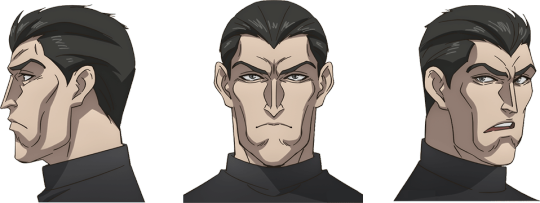
Tomokazu Sugita as Abigail

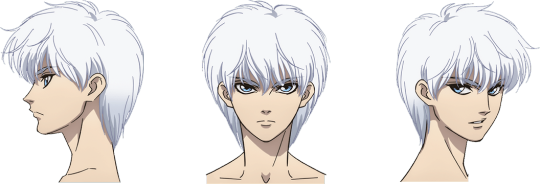
Kensho Ono as Kall-Su


Nao Tōyama as Sheila Tuel Meta-Ilicana
Previously announced cast members


Kishō Taniyama as Dark Schneider


Tomori Kusunoki as Tia Noto Yoko
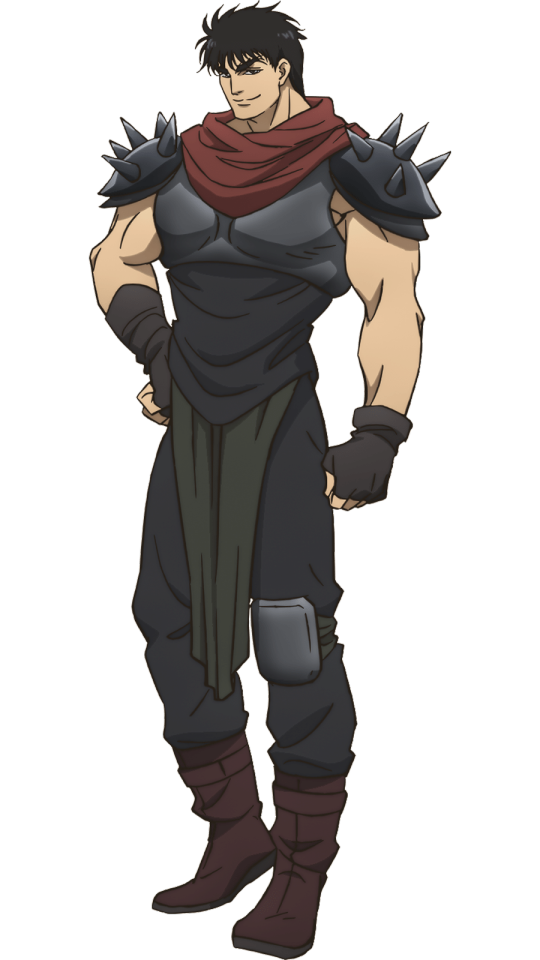

Hiroki Yasumoto as Gara
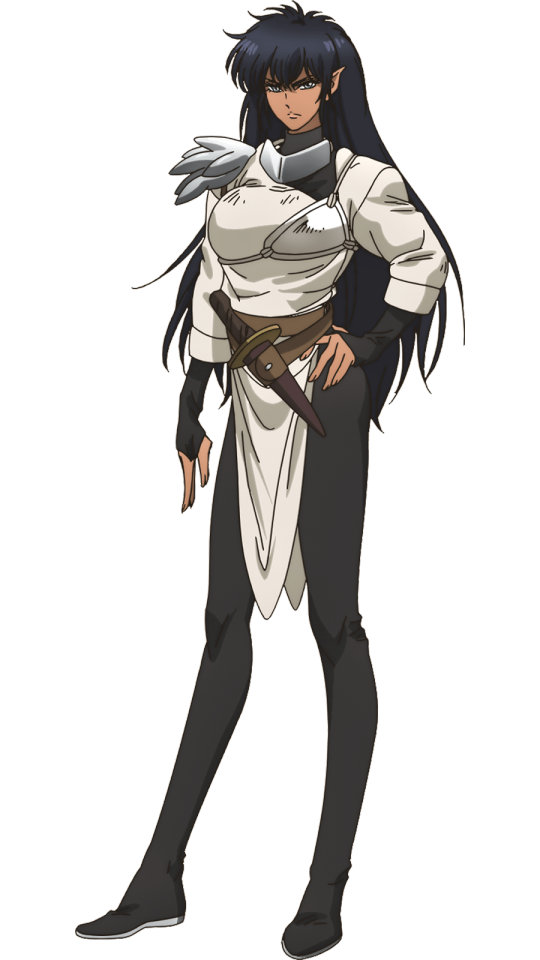
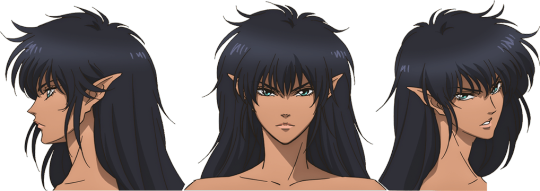
Yōko Hikasa as Arshes Nei
Staff
Director: Takaharu Ozaki
Series composition: Yousuke Kuroda
Character design: Sayaka Ono
Sound director: Yasunori Ebi
Music: Yasuharu Takanashi
Creature Design: Raita Sunaga
Effects Design: Tatsuo Yamada
Art Director: Kazuhiro Inoue (Kusanagi)
Art Setting: Barnstorm Design Labo
Color Key Artist: Aiko Shinohara
Special Effects Supervisor: Kumiko Taniguchi
Special Effects: Ayumi Arahata (Team Taniguchi)
3D CGI: Felix Film
Compositing Director of Photography: Junpei Takatsu
Editing: Mai Hasegawa (EditZ)
Animation production: LIDEN FILMS
#Bastard!!#Bastard#Bastard Heavy Metal Dark Fantasy#Bastard Ankoku no Hakaishin#Bastard anime#LIDEN FILMS#Netflix#anime#TV anime#long post
53 notes
·
View notes